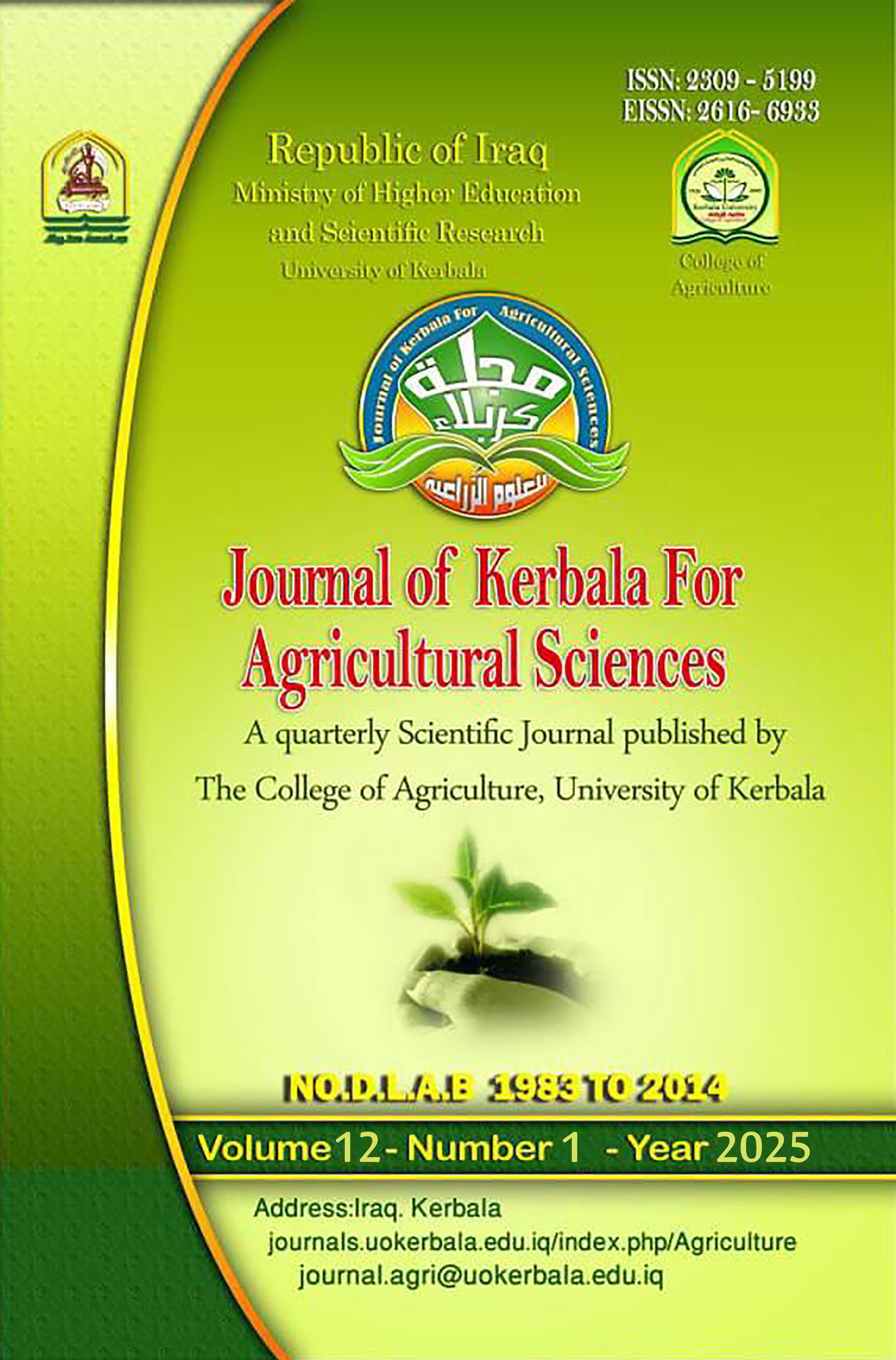Effectiveness of some local and commercial isolates of entomopathogenic nematodes in controlling Tuta absoluta larvae and comparing them with the pesticide Oxymatrine in the laboratory
DOI:
https://doi.org/10.59658/jkas.v12i1.3238Keywords:
Steinernema carpocapsae, Heterorhabditis bacteriophora, Oscheius onirici, Oscheius myriophilus, Tuta absolutaAbstract
A laboratory study was conducted to evaluate the effectiveness of local isolates Oscheius onirici, Oscheius myriophilus, commercial isolates Heterorhabditis bacteriophora and Steinernema carpocapsae of entomopathogenic nematodes (EPNs) to compare them with the plant pesticide Oxymatrine in controlling the tomato leaf miner Tuta absoluta on the tomato cultivar Ala in the laboratory. The results showed that the local biological treatment Oscheius spp gave the highest mortality rate for the third-stage larvae at concentrations of 100, 300, and 500 Ijs/ml and a cumulative killing rate of 100% during 5 days, respectively, followed by the commercial isolate H. bacteriophora, which had a mortality rate of 100%. There were no significant differences between the three isolates; the concentration of 500 Ijs was the highest cumulative killing rate for the biological treatments. At the same time, there was a significant difference between the commercial isolate S. carpocapsae and the other isolates, as the larval mortality rate reached 40% compared to the chemical pesticide.The mortality rate of the third-stage larvae T. absoluta at concentrations of 1.8, 1.5, and 1 ml during 5 days reached 40%, 36%, and 30%, respectively, as the recommended concentration of 1.8 gave the highest cumulative killing rate of 40% and with a highly significant difference between the three isolates. Still, there was no significant difference between the commercial isolates. The chemical pesticide S. carpocapsae reached a 40% mortality rate over 5 consecutive days.
Downloads
Published
How to Cite
Issue
Section
License
Copyright (c) 2025 Copyright (c) 2024 is the Author's article. Published by the Journal of Kerbala for Agricultural Sciences under a CC BY 4.0 license

This work is licensed under a Creative Commons Attribution 4.0 International License.
Licensing Terms
All articles are published under a Creative Commons License and will be directed to the Creative Commons Attribution 4.0 International License (CC BY 4.0) That permits use, distribution, and reproduction in any medium, provided the original work is properly cited. This license also allows the work to be used for commercial purposes.
Use by both non-commercial and commercial users
This content is licensed under a Creative Commons Attribution 4.0 International (CC BY 4.0) license, permitting use by both non-commercial and commercial users. Individual users may access, download, copy, display, and redistribute the articles to colleagues, as well as adapt, translate, and text- and data-mine the content, subject to the following conditions:
- The author's moral rights, including the right of attribution and the right to protect their work from derogatory treatment, are respected.
- Where content in the article is identified as belonging to a third party, users must ensure that any reuse complies with the copyright policies of the owner of that content.
- If the article content is reused for research or educational purposes, users should maintain a link to the appropriate bibliographic citation, including the DOI and a link to the published version on the journal's website.






